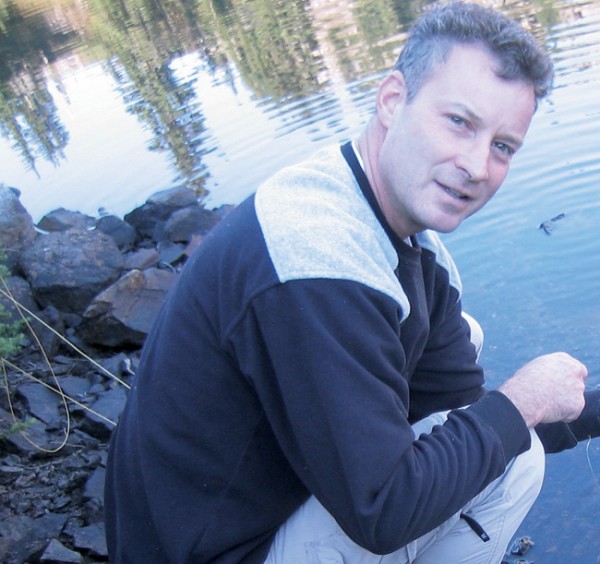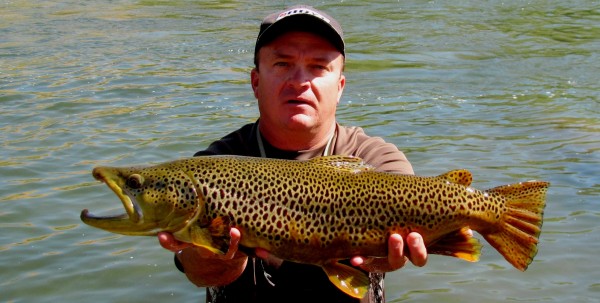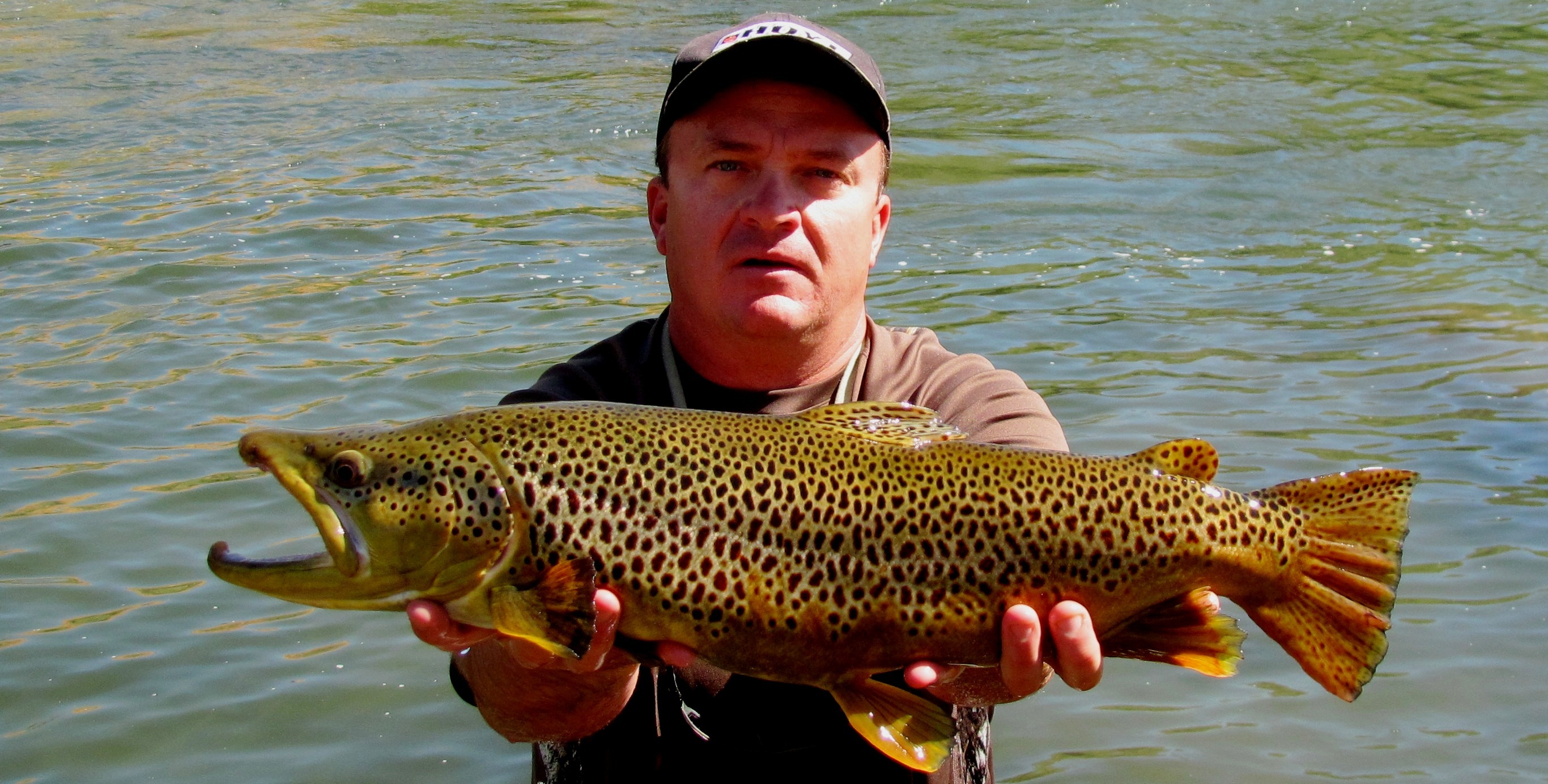
Timothy Egan, doing a little fly angling, worked for The New York Times for 18 years – as Pacific Northwest correspondent and a national enterprise reporter. In 2001, he was part of the Pulitzer Prize-winning team that wrote the series “How Race Is Lived in America.” He is the author of several books, including “The Worst Hard Time,” a history of the Dust Bowl, for which he won the National Book Award, and most recently, “The Big Burn: Teddy Roosevelt and the Fire That Saved America.”
By Timothy Egan – SALT LAKE CITY
[dropcap]I[/dropcap]n a part of Italy where chestnut trees are thick in the Apennine foothills, I once asked a neighbor in the little community where we lived how I might kill a wild boar. This impulse was driven by appetite, mostly — glimpses of those feral beasts on my morning runs that had me dreaming of a blood-red ragu made of local cinghiale.
The answer was, dream on. If you want to hunt in Italy, or most of Europe for that matter, you’d better belong to a private club, with access to a rich man’s estate.
It struck me then, in the kind of epiphany that takes living in another country to appreciate, that the public land endowment of the United States is one of the greatest perks of this democracy. Rich or poor, every citizen of the United States of America has title to an area almost the size of Italy.

Bristol Bay area public lands. If it’s sold to private individuals or corporations. You’d be a poacher, not a fly angler.
This ticket to roam free in the American backyard is no constitutional guarantee. The great, unfenced public domain, much of it forested or hidebound in sage and mesquite, is the envy of the rest of the world only because a few visionary souls bucked the powers of their day.
But now the powers of this day are trying to tear away at that inheritance. The election could determine whether big sections of our shared setting continue to be held by the general public. A radical plan to overhaul a century of sensible balance has been embraced by the Republican presidential ticket. Handing over millions of acres of public land has long been a dream borne on the vapors of single-malt Scotch sipped inside trophy homes in the 1 percent ZIP codes of the West. Usually, the idea vanishes with the vapors. Not this year.
First, a little background. We play on this turf — national parks, national forests and the 252 million acres of the Bureau of Land Management. We use much of it as a source for oil and natural gas. We look to it for clues about the continent’s first inhabitants: native sites, holding shards of cultures that predate Charlemagne’s time. Or we just let it be.
Finding the right balance is the trick. Imagine two families who hate each other trying to manage the same summer home. The biggest threats over the last 50 years have come from demands of the so-called Sagebrush Rebellion — a Western-sounding name for a property grab by well-connected special interests.
It takes a truly small-minded politician, or one so ignorant of the nation’s rich public land history, to upset the balance. This year, that politician is Mitt Romney.
Romney, you may recall, made news in the West earlier this year when he told a Nevada newspaper that “I don’t know what the purpose is” of all this federal land in the West. It would be nice to think he just doesn’t get it, because he’s never spent any time in the free outdoors.
But Romney has since coupled the black hole of his knowledge with support for Republican efforts to end federal control over large sections of the West. The Utah legislature has passed a bill, signed by the governor, that demands that the federal government hand over almost 30 million acres to the state. Other states are looking to follow Utah’s lead, and Romney has cheered their efforts.
Who cares, so long as the oil drillers stay away from the canyons, arches and ochre-colored wonderlands of the West? As for state control — why should anyone think a governor here in Salt Lake City would be any less of a steward than someone in a federal uniform?

Public lands Truckee River portion. If it’s no longer public land – sold to a company; you’re a trespasser now, a law breaker, fit only to be handcuffed, jailed and fined.
Here’s why: The states, of course, are cash-strapped, and want these lands only so they can industrialize them quickly, with minimal regulations. If you want to know what our public lands would be like under states in the pocket of oil companies, just look at the closing days of George W. Bush’s presidency, when drillers pressed to scar up land near some of the most iconic national parks and monuments in the Southwest. Only a change in administrations, and lawsuits that back the people’s right to manage the lands properly, stopped them in their tracks.
Second — and more importantly — these are our lands they want to take away. The toddler in Tuscaloosa has equal claim to the stunning Vermilion Cliffs outside the Grand Canyon as does a cowboy in Arizona. One day, when we are a nation of 600 million, these community-owned treasures will be all the more valuable.
Romney has promised to let oil companies have their way — no surprise, given that his chief energy adviser, Harold Hamm, is an oil billionaire with stakes in multiple energy sites throughout the West.
But no major-party presidential nominee has ever taken a stance as radical as Romney’s. At a wide-ranging public lands conference at the University of Colorado in Boulder earlier this month, veteran public lands users — ranchers, hikers, managers — from all facets of the political spectrum expressed astonishment that Romney had sided with his party’s most extreme fringe.
The first presidential debate — next Wednesday, Oct. 3, in Denver — gives the moderator Jim Lehrer a chance to ask a rare question about something beyond the cackle of magpies inside the Beltway. Please, Jim: your audience at the University of Denver, and all over the West, would love to hear something about the public lands stance of both candidates.
I had some hope for a more mainstream view when Paul Ryan was named Romney’s running mate. He boasted that he’s summited 28 of Colorado’s 14,000-foot mountains. Alas, Ryan also claimed to have run a sub-three-hour marathon, only to get caught lying — shaving off more than an hour — when Runner’s World fact-checked him.
Better to take the top of the ticket at his word: a lord of the manor who wants to give away our home on the range.
[information]
TIMOTHY EGAN September 27, 2012, 9:00 PM3
The Geography of Nope
By TIMOTHY EGAN
[/information]







As a young hunter in Massachusetts, John Quincy Adams, noted in his diary that: “Game laws are said to be directly opposed to the liberties of the subject; I am well persuaded that they may be carried too far, and that they really are in most parts of Europe. But it is equally certain that where there are none, there is never any game; so that the difference between the country where laws of this kind exist and . . . where they are unknown must be that in the former very few individuals will enjoy the privilege of hunting and eating venison, and in the latter this privilege will be enjoyed by nobody.”
Adams, as Secretary of State to James Monroe negotiated the treaty to obtain Florida from Spain. As President, Adams established a 30,000 acre reservation on Santa Rosa Island in Pensacola Bay to conserve and manage the live oak resource for ship building. So Florida owes much to Adams; the opponents to more restrictive conservation laws should learn from him and follow his example. They should not follow the example of his successor, Andrew Jackson, who resended the oak reserve.
In 1846 William Elloitt observed that: “What a wonder, then, that men, forgetful of the future, surrendering themselves to the present, mingle with the throng of destructives who seem bent on extermination of the game, rather than attempt the difficult, and unpopular, and thankless office of conservation!”
From: “AMERICAN SPORTSMEN and the Origins of Conservation”, 3rd Revised and expanded, Edition
By John F. Reiger
Peefect, thanks – Skip